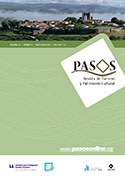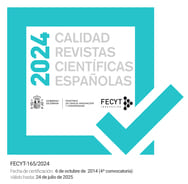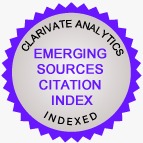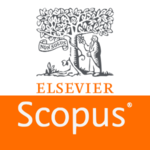Modelação preditiva para a gestão sustentável do fluxo de peregrinos no Caminho de Santiago de Compostela
DOI:
https://doi.org/10.25145/j.pasos.2025.23.029Palavras-chave:
Overtourism, modelos preditivos, gestão, Caminho de SantiagoResumo
Quando os destinos se encontram numa fase de crescimento ou de maturidade, é frequente surgirem dois debates simultâneos: o overtourism existe e - se existir - tem consequências negativas? A literatura tem tentado dar respostas científicas a estas questões, analisando casos de destinos urbanos e de sol e praia. Os elementos diferenciadores dos destinos rurais em relação a esta questão têm sido geralmente negligenciados. Este estudo apresenta uma ferramenta de previsão construída especificamente para um destino em crescimento localizado - quase inteiramente - num ambiente rural: o Caminho de Santiago. Com base em informações recolhidas nos últimos 20 anos pelo Gabinete de Acolhimento ao Peregrino, sobre mais de 4 milhões de peregrinos, esta ferramenta de previsão tem como objetivo prever o número de peregrinos que passam por uma série de hotspots - utilizando o método SARIMA (Seasonal Autoregressive Seasonal Integrated Moving Average) -, e modelos Trigonométricos de sazonalidade, transformação Box-Cox, erros ARMA, Tendência e Componentes Sazonais (TBATS) - ajudando a gerir o fluxo de peregrinos e, assim, controlar as possíveis consequências negativas do overtourism, optimizando a experiência dos turistas, empresários e residentes dos hotspots.
Downloads
##plugins.generic.pfl.publicationFactsTitle##
##plugins.generic.pfl.reviewerProfiles## Indisp.
##plugins.generic.pfl.authorStatements##
##plugins.generic.pfl.indexedIn##
-
##plugins.generic.pfl.indexedList##
- ##plugins.generic.pfl.academicSociety##
- PASOS. Revista de Turismo y Patrimonio Cultural
- ##plugins.generic.pfl.publisher##
- Instituto Universitario de Investigación Social y Turismo. Universidad de La Laguna (España) - Instituto Universitario da Maia ISMAI (Portugal)
Referências
Algieri, B. (2006). An econometric estimation of the demand for tourism: The case of Russia. Tourism Economics, 12(1), 5–20. https://doi.org/10.5367/000000006776387114
Almeida, F. (2006). Tipología de visitante turístico y satisfacción de la experiencia turística en Santiago de Compostela. Baetica. Estudios de Arte Geografía e Historia, 28, 231–258. https://doi.org/10.24310/baetica.2006.v1i28.260
Armstrong, G. W. G. (1972). International tourism: Coming or going. The methodological problems of forecasting. Futures, 4(2), 115–125. https://doi.org/10.1016/0016-3287(72)90036-5
Box, G. E. P. & Cox, D. R. (1964). An Analysis of Transformations. In Journal of the Royal Statistical Society: Series B (Methodological) (Vol. 26, Issue 2, pp. 211–243). https://doi.org/10.1111/j.2517-6161.1964.tb00553.x
Cifuentes, M. (1992). 1992_METODOLOGÍA CIFUENTES.pdf. In Determinación de capacidad de carga turística en áreas protegidas (p. 23).
Coccossis, H. (2001). Sustainable development and tourism in small islands: Some lessons from Greece. Anatolia, 12(1), 53–58. https://doi.org/10.1080/13032917.2001.9686999
Coccossis, H., & Mexa, A. (2004). The Challenge of Tourism Carrying Capacity Assessment: Theory and Practice. Ashgate Publishing.
Colomb, C., & Novy, J. (2016). Protest and resistance in the tourist city. Routledge.
Cortes, C., & Vapnik, V. (1995). Support-Vector Networks. Machine Learning, 20, 273–297.
de Livera, A. M., Hyndman, R. J., & Snyder, R. D. (2011). Forecasting time series with complex seasonal patterns using exponential smoothing. Journal of the American Statistical Association, 106(496), 1513–1527. https://doi.org/10.1198/jasa.2011.tm09771
Duque, C. M., & Morère-Molinero, N. (2019). Analysis of social carrying capacity of the French Way for the Camino de Santiago: A quantitative approach. Boletin de La Asociacion de Geografos Espanoles, 82, 1–33. https://doi.org/10.21138/bage.2682
Fernández, M., & Riveiro, D. (2018). Estudio del impacto socioeconómico del Camino de Santiago. Axencia de Turismo de Galicia.
Frechtling, D. C. (2001). Forecasting: Tourism demand methods and strategies (1st ed.). Butterworth-Heinemann.
García-Hernández, M., Ivars-Baidal, J., & Mendoza de Miguel, S. (2019). Overtourism in urban destinations: The myth of smart solutions. Boletin de La Asociacion de Geografos Espanoles, 83, 1–38. https://doi.org/10.21138/bage.2830
García Hernández, M., & De la Calle Vaquero, M. (2012). Capacidad de carga en grandes recursos turístico-culturales. Anales de Geografía, 32(2), 253–274.
Gardner, E. S. (1985). Exponential Smoothing: The State of the Art. Journal of Forecasting, 4(August 1984), 1–28.
Getz, D. (1983). Capacity to absorb tourism. Concepts and implications for strategic planning. Annals of Tourism Research, 10(2), 239–263. https://doi.org/10.1016/0160-7383(83)90028-2
Gigirey, A. (2023). Turismo cultural en espacios sagrados desde la perspectiva de los residentes. Un estudio de la Catedral de Santiago de Compostela. Estudios Turísticos, 158, 79–108.
Gray, H. P. (1966). The Demand for International Travel by the United States and Canada. International Economic Review, 7(1), 83–92.
Guisán, M. del C. (1997). Econometría. McGraw-Hill, Interamericana de España.
Guthrie, H. W. (1961). Demand for tourists’ goods and services in a world market. Papers of the Regional Science Association, 7(1), 159–175.
Hamilton, J. D. (1994). Time series analysis. Princeton university press. https://doi.org/10.1016/0377-2217(85)90052-9
Hansen, T. (2020). Media framing of Copenhagen tourism: A new approach to public opinion about tourists. Annals of Tourism Research, 84(February), 102975. https://doi.org/10.1016/j.annals.2020.102975
Hassani, H., Silva, E. S., Gupta, R., & Segnon, M. K. (2015). Forecasting the price of gold. Applied Economics, 47(39), 4141–4152. https://doi.org/10.1080/00036846.2015.1026580
Hochreiter, S., & Schmidhuber, J. (1997). Long Short-Term Memory. Neural Computation, 9, 1735–1780.
Holt, C. C. (2004). Forecasting seasonals and trends by exponentially weighted moving averages. International Journal of Forecasting, 20(1), 5–10. https://doi.org/10.1016/j.ijforecast.2003.09.015
Información estadística Oficina Peregrino. (2024). Oficina de Acogida Al Peregrino. https://oficinadelperegrino.com/estadisticas-2/
Karabiber, O. A., & Xydis, G. (2019). Electricity price forecasting in the Danish day-ahead market using the TBATS, ANN and ARIMA methods. Energies, 12(5). https://doi.org/10.3390/en12050928
Kuchcik, M. (2021). Mortality and thermal environment (UTCI) in Poland—long-term, multi-city study. International Journal of Biometeorology, 65(9), 1529–1541. https://doi.org/10.1007/s00484-020-01995-w
Li, G., Song, H., & Witt, S. F. (2005). Recent developments in econometric modeling and forecasting. Journal of Travel Research, 44(1), 82–99. https://doi.org/10.1177/0047287505276594
Liu, H., Liu, Y., Wang, Y., & Pan, C. (2019). Hot topics and emerging trends in tourism forecasting research: A scientometric review. Tourism Economics, 25(3), 448–468. https://doi.org/10.1177/1354816618810564
Lopez, L., Pazos Otón, M., & Piñeiro Antelo, M. de los Á. (2019). ¿Existe overtourism en Santiago de Compostela? Contribuciones para un debate ya iniciado. Boletín de La Asociación de Geógrafos Españoles, 83(2825), 1–48.
Mc Cool, S. F., & Lime, D. W. (2001). Tourism carrying capacity: Tempting fantasy or useful reality? Journal of Sustainable Tourism, 9(5), 372–388. https://doi.org/10.1080/09669580108667409
McCulloch, W. S., & Pitts, W. H. (1943). A logical calculus of the ideas immanent in nervous activity. Bulletin of Mathematical Biophysics, 5, 115–133. https://doi.org/10.7551/mitpress/12274.003.0011
Medina, X. S., & Lois González, R. C. (2017). Ordenación del Territorio y estrategias de planificación en los Caminos de Santiago Patrimonio Mundial. Investigaciones Geográficas, 68, 47. https://doi.org/10.14198/ingeo2017.68.03
Milano, C. (2018). Overtourism, malestar social y turismofobia. Un debate controvertido. PASOS. Revista de Turismo y Patrimonio Cultural, 18(3), 551–564. https://doi.org/10.25145/j.pasos.2018.16.041
Park, S., Lee, J., & Song, W. (2017). Short-term forecasting of Japanese tourist inflow to South Korea using Google trends data. Journal of Travel and Tourism Marketing, 34(3), 357–368. https://doi.org/10.1080/10548408.2016.1170651
Perán López, J. (2008). Demanda de espacios naturales para el ocio: Modelos de capacidad de acogida perceptual. Aplicación a los parques nacionales de Timanfaya y Ordesa, y Monteperdido. Universidad Politécnica de Madrid.
Postma, A., Koens, K., & Papp, B. (2018). Overtourism: Carrying Capacity Revisited. In The Overtourism Debate (pp. 229–249). https://doi.org/10.1108/978-1-83867-487-820201015
Postma, A. & Schmuecker, D. (2017). Understanding and overcoming negative impacts of tourism in city destinations: conceptual model and strategic framework. Journal of Tourism Futures, 3(2), 144–156. https://doi.org/10.1108/JTF-04-2017-0022
Rosenblatt, F. (1958). The perceptron: A probabilistic model for information storage and organization in the brain. Psychological Review, 65(6), 386–408. https://doi.org/10.1037/h0042519
Santos Solla, X. M., & Pena Cabrera, L. (2014). Management of Tourist Flows. The Cathedral of Santiago de Compostela. PASOS Revista de Turismo y Patrimonio Cultural, 12(4), 719–735. https://doi.org/10.25145/j.pasos.2014.12.053
Seraphin, H., Sheeran, P., & Pilato, M. (2018). Overtourism and the fall of Venice as a destination. Journal of Destination Marketing and Management, 9(September 2017), 374–376. https://doi.org/10.1016/j.jdmm.2018.01.011
Shelby, B., Vaske, J. J., & Heberlein, T. A. (1989). Comparative_analysis_of_crowding_in_mult.pdf. Leisure Sciences, 11, 269–291.
Shelby, B. & Heberlein, T. A. (1987). Carrying capacity in recreation settings. Oregon State University Press.
Silva, E. S., Hassani, H., Madsen, D. Ø., & Gee, L. (2019). Googling fashion: Forecasting fashion consumer behaviour using Google Trends. Social Sciences, 8(4). https://doi.org/10.3390/socsci8040111
Song, H., & Li, G. (2008). Tourism demand modelling and forecasting-A review of recent research. Tourism Management, 29(2), 203–220. https://doi.org/10.1016/j.tourman.2007.07.016
Talkhi, N., Akhavan Fatemi, N., Ataei, Z., & Jabbari Nooghabi, M. (2021). Modeling and forecasting number of confirmed and death caused COVID-19 in IRAN: A comparison of time series forecasting methods. Biomedical Signal Processing and Control, 66(February), 102494. https://doi.org/10.1016/j.bspc.2021.102494
UNWTO. (2018). ‘Overtourism’? – Understanding and Managing Urban Tourism Growth beyond Perceptions, Executive Summary. In ‘Overtourism’? – Understanding and Managing Urban Tourism Growth beyond Perceptions, Executive Summary. https://doi.org/10.18111/9789284420070
UNWTO. (2023). UNWTO. https://www.unwto.org/why-tourism
Uysal, M., & Crompton, J. L. (1985). An Overview of Approaches Used to Forecast Tourism Demand. Journal of Travel Research, 7–15.
Verbeek, M. (2004). A Guide to Modern Econometrics (2nd ed.). John Wiley & Sons, Ltd.
Wattanacharoensil, W., & Weber, F. (2020). Preface to Journal of Travel and Tourism Marketing: special issue on measuring and monitoring overtourism. Journal of Travel and Tourism Marketing, 37(8–9), 871–872. https://doi.org/10.1080/10548408.2020.1840839
Winters, P. R. (1960). Forecasting Sales by Exponentially Weighted Moving Averages. Management Science, 6(3), 324–342. https://doi.org/10.1287/mnsc.6.3.324
Witt, S. F., & Witt, C. A. (1995). Forecasting tourism demand: A review of empirical research. International Journal of Forecasting, 11(3), 447–475. https://doi.org/10.1016/0169-2070(95)00591-7
Wooldridge, J. (2016). Introductory Econometrics.
Yang, Y., Liu, H., & Li, X. (Robert). (2019). The World Is Flatter? Examining the Relationship between Cultural Distance and International Tourist Flows. Journal of Travel Research, 58(2), 224–240. https://doi.org/10.1177/0047287517748780
Yang, Y., Pan, B., & Song, H. (2014). Predicting Hotel Demand Using Destination Marketing Organization’s Web Traffic Data. Journal of Travel Research, 53(4), 433–447. https://doi.org/10.1177/0047287513500391
Downloads
Publicado
Como Citar
Edição
Seção
Licença
Copyright (c) 2024 Yago Atrio Lema, Isabel Neira Gómez, María L. del Río

Este trabalho está licenciado sob uma licença Creative Commons Attribution-NonCommercial-NoDerivatives 4.0 International License.
Confirmo que o trabalho é original (de minha/nossa autoria), e que não será submetido a outras revistas ou publicações até a resolução final do processo de revisão em PASOS, RTPC.
Autorizo a publicação do meu trabalho por PASOS, PSTN de acesso livre e aberto em qualquer dos formatos que considere oportuno, por tempo indeterminado e como colaboração não remunerada.
Da mesma forma, o(s) autor(es) entende(m) que o trabalho publicado pode ser vinculado ou depositado em qualquer servidor ou incluído em outras publicações (republicação), desde que o novo local e/ou a nova edição façam referência à publicação original e reconheçam a autoria e propriedade de direitos autorais das publicações PASOS RTPC.
Os autores entendem que uma verificação de plágio autoplágio será realizada, e o artigo poderá ser removido a qualquer momento do fluxo editorial.










